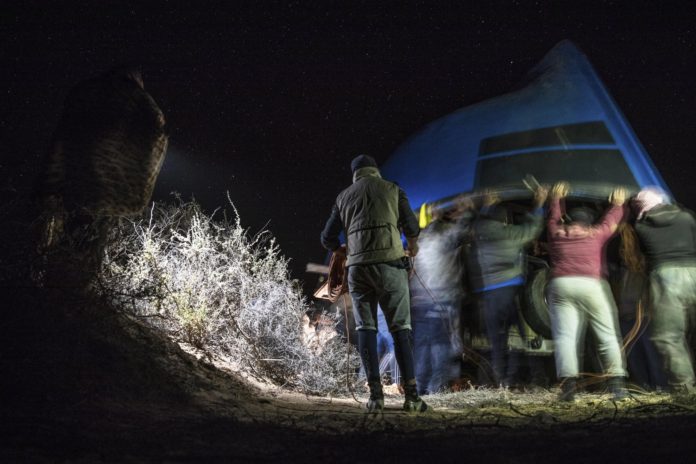WESTERN SAHARA
Beneath a star-packed sky in the Sahara, smugglers and handymen unearth a boat buried in the sand, a made-to-order vessel for carrying migrants from the North African coast to Spain’s Canary Islands.
With seasoned skill, the men hoist the blue-bottomed wooden boat atop a four-wheel drive vehicle that will take it from this inland hideaway to the Western Sahara shore. From there, the boat is meant to take 20 to 30 migrants into the Atlantic Ocean and across what the European Union’s border agency calls “the most dangerous migratory route in the world.”
The boat handover is a crucial but little-seen piece of the migrant smuggling chain in disputed Western Sahara — a business that thrived last year, as the coronavirus pandemic plunged many Africans into poverty and, with other routes choked off, migration to the Canary Islands jumped eight-fold to the highest rates ever recorded.

Encouraged by aid from Spain and the EU, the Moroccan authorities who control Western Sahara — where some residents have long sought independence — are increasingly cracking down and thwarted a recent boat transfer witnessed Sky News Africa.
But many others succeed, as smugglers dodge police helicopter searchlights in the desert and reach fishing towns on the coast around Dakhla. The peninsula city boasts a thriving fishing port, and kitesurfing enthusiasts flock to its waters. But in recent months, its beaches have become a hot spot for smuggling networks eyeing the Canaries, 500 kilometers (300 miles) north.
Although irregular crossings to Europe dropped overall in 2020, the Canary Islands route saw a significant rise, with some 22,600 migrants arriving, making Spain the main point of entry for migrants trying to reach European shores last year, according to EU and Spanish government figures. At least 600 people died or disappeared trying to make the journey.

The resurgence of the route has been driven in part by COVID-19.
The pandemic has wiped out livelihoods across Morocco by cutting off tourism revenue and periodically shutting down local businesses. While in the past most arrivals in the Canaries were from sub-Saharan Africa, now about half are Moroccans. Boats also routinely set out from the West African shores of Guinea, Gambia and Mauritania, according to the International Organization for Migration.
A resident of Dakhla who organizes trips for migrants said economic difficulties drove him to work for a smuggling network.

“We had to make money and feed our families,” the 32-year-old told Sky News Africa on condition of anonymity because what he does is illegal.
He says he puts together one trip per week, while competitors send out up to 10 boats a night. He estimates as many as half of the migration attempts fail, either because of problems before departure or at sea.
One recent failure was visible on the shores of the Dakhla peninsula: the freshly charred remains of a migrant boat that caught fire. The fate of those aboard is unclear.

IOM’s Missing Migrants Project provisionally recorded 601 deaths or disappearances on the Canary route last year, including at least 109 who left from Dakhla or were found near Dakhla. They are still investigating another eight missing boats with 355 people aboard.
The Dakhla resident said migrants pay $2,000 for the trip — a vast sum in Morocco, where the typical worker earns a few hundred dollars a month — but wouldn’t say how much he earns himself.






















![2018 Sports Review: Winners, losers and questions facing African football 2018 Sports Review [1]: Winners, losers and questions facing African football](http://skynewsafrica.net/wp-content/uploads/2018/12/caf1-100x70.jpg)
![Watch: The harrowing moment a taxi flies into pedestrians in Ballito SA [video]](http://skynewsafrica.net/wp-content/uploads/2018/12/acci2-100x70.png)

